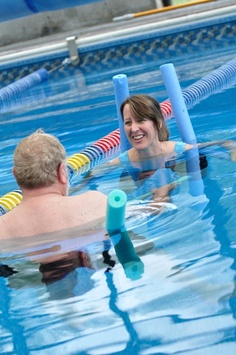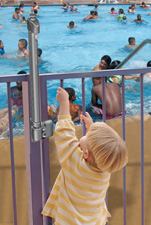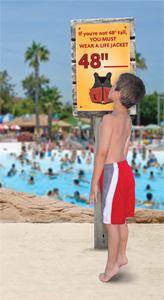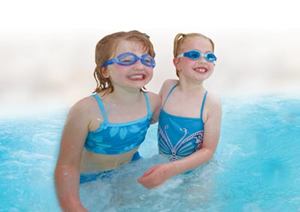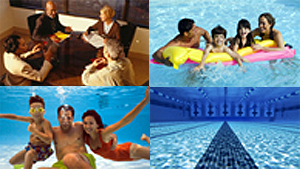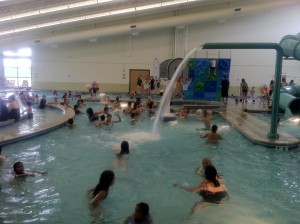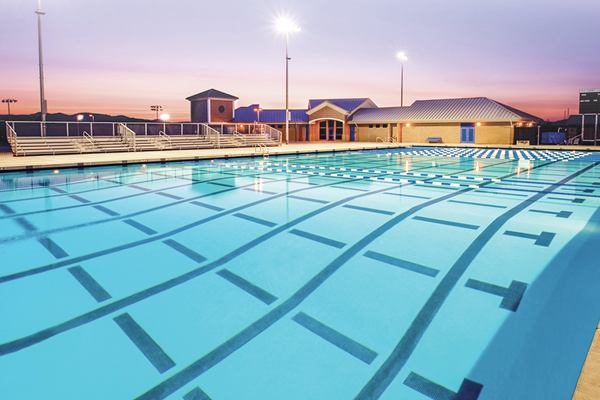An acid wash is, put simply, purposeful stripping of a tiny layer of plaster, exposing fresh plaster beneath. Therefore, it is ill-advised to make it an annual custom, which will accelerate the need for re-plastering. Most plaster coats (sometimes called whitecoat or marcite) are in excess of 1/2″, so a few careful acid washes should not hurt.
You may also decide on an acid wash not because of swamp conditions, but just to bring out a brighter, whiter finish. Mineral stains and/or deposits, chlorine stains, even dirt stains…an acid wash is always a dramatic aesthetic improvement.
If your pool has had years of algae blooms, and if your pool seems to grow algae overnight or just bloom very easily….changing the water and acid washing can help give you an algae free summer.
Acid is a dangerous substance. Pool company personnel are specially trained in its application and wear protective clothing and breathing apparatus during the acid wash. To protect our environment, the acid/water waste should be neutralized with soda ash prior to its being pumped to a safe location.
If you decide to drain and clean your own pool, make sure that the hydrostatic relief plugs are pulled as soon as possible, and that the water is pumped to a distant location, or into a storm drain. You may also need to check with local water authorities for waste water discharge regulations.
As you drain the pool, wash it down (scrub if necessary) to remove all algae and leaves. Bag up all leaves and debris in the pool’s bottom. When the pool is clean and empty, you can begin to acid wash the plaster. Put on protective clothing and rubber boots, goggles and wear a breathing mask designed for acid fumes.
Add 1 gallon acid to 1 gallon water (Always add acid to water, never the other way around). Wet down the wall with a hose. Keep the hose(s) running at all times, without a nozzle on it. Pour the acid/water mixture down the wall, from top to bottom, one 10 foot section at a time. Do not allow the acid to sit on the plaster for very long. Usually 30 seconds is long enough. Use an acid brush to scrub the surfaces and move the acid around. Rinse quickly and thoroughly.
Make sure acid is rinsed completely, as it will continue to etch the plaster. Also try to prevent the acid from wearing a channel path from shallow end to deep end. This can create a worn stripe on the floor.
If the 50/ 50 mixture isn’t strong enough, you can increase the acid strength or the hang time (before rinsing). Usually pools are acid washed twice with the same strength mixture. Remember that you don’t want to damage or “burn” the plaster.
After the acid wash, the bottom of the pool will be filled with a foamy, acid puddle. This needs to be neutralized before pumping out. Use 2 lbs of soda ash per 1 gallon of acid used. Broadcast the ash over the puddle while stirring with a pool brush on a pole. Use a small submersible pump with a hose to pump out the remaining acid water. Be careful where you pump it to. Even if properly neutralized, it may destroy plants or kill fish, frogs, etc. Rinse the bowl again, and re-pour the bowl of the deep end to clean up well around the drain, being careful not to burn the plaster too much.
Don’t rush the job and be safe. The fumes can be very strong, and very dangerous. Be sure to wear a respirator that will block muriatic acid fumes, goggles or safety glasses and protective clothing. Wear old shoes, or rubber boots. Spray off before exiting the pool. Transporting the acid from the store to the pool can be hazardous also. Secure the load in the vehicle. Always have a second person nearby when acid washing the pool. If acid drops enter the mouth or eye, rinse with the hose for 15 mins, without a nozzle on it. Acid on the skin won’t usually burn too much, just rinse quickly, for 30 seconds.
It is advised that you pay a service company to perform this for you.
Complete drain & clean charges average $3000. Higher costs may be seen for large amounts of debris in the pool, excessive neglect, or larger sized pools. Lower costs will be realized for clean or empty pools, or localized acid washings. If your water is from a well, you may elect to refill the pool with trucked – in water. Expect to pay about $150 per 5,000 gallons. If you refill from the hose; water costs are a few dollars per thousand gallons. Contact your water authority to let them know you are filling a pool and they may not charge you for the sewer, only the water portion of the bill.


